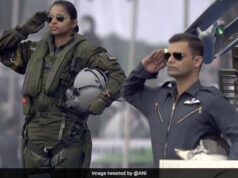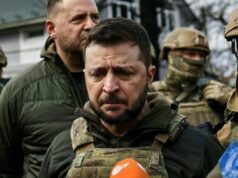An Expert Explains : The Indian Airforce’s Role In Eastern Ladakh

The Indian Army is preparing for extended deployment at the LAC through the winter months. This leaves the IAF with a key role in providing support to the troops. What are the challenges to meet in the harsh winter and tough terrain?
by Manmohan Bahadur
With a resolution to the standoff on the LAC still elusive, the Indian Army is preparing for extended deployment of troops in the region through the winter months. This leaves the IAF with a key role in providing support to the troops. What are the challenges to meet in the harsh winter and tough terrain?
Can The IAF Support The Logistics of Such A Large Force?
One part of the logistics for the Army requires land transportation, which would have been planned for before winter sets in and the passes close. The IAF will be doing very urgent missions, for which it is well prepared with a very good transport fleet consisting of C-17 Globemasters, Il-76s, and many An-32s. If it comes to the crunch, the C-130 Super Hercules can also be used for logistics support, although these are meant for special operations.
We also have Mi-17 helicopters and Cheetal light helicopters to cater to forward posts. In addition, the Chinook heavy-lift helicopters will be used for carrying bulky stores, either within the fuselage, or slung under it.
What Are The Topographical Challenges of Flying Into Leh Or Other Advanced Landing Grounds (ALGs) In Eastern Ladakh?
The biggest challenge is the altitude of the two airfields of Leh and Thoise, but since we have been flying there for decades, the air crew are well aware of the peculiarities of these fields.
The landing grounds at high altitude have their own challenges, which result in reduction of load-bearing capacity of the planes/choppers. Additionally, the air crew have to call upon their skills to navigate the hills and land on the small, matchbox-like helipads — there is just no place on these hills to make bigger ones!
What Additional Hazards Will Winter Bring?
Bad weather that accompanies the western disturbances that strike northern India in the winter months is a challenge, as it reduces visibility and results in a low cloud base. So the crew have to be on the ball to make sure they can find a way to circumvent bad weather. This is not always possible, and we have long periods when flying has to be curtailed.
And What Effect Does Extreme Cold Have On Weight-Carrying Aircraft?
The lower the temperature, the better the payload because the higher air density increases the lift-carrying capability of flying machines. So the loads that can be carried during winter are higher than during summer.
This is a big advantage. For instance, an Il-76, which in summer can carry hardly any load from Leh, can fly out around 20 tonnes in the winter. It is the same with helicopters, whose load-carrying ability to extremely high helipads at altitudes of 17,000 to 20,000 feet increases substantially in winter. And it reduces drastically in summer.
India China border dispute, India China LAC dispute, India China de-escalation, LAC dispute, Ladakh, Indian Air Force, IAF C-17 Globemaster, Express Explained, Indian Express
Do The High Altitude And Topography Pose A Challenge To Navigation And Night Flying?
The modern navigation equipment available now overcome most of the challenges. But mission accomplishment is not merely flying from place A to B. The aircraft has to land to complete a mission. That is where temperature and altitude plus weather become the final arbiters.
Navigation is not a problem, but take-offs and landings are tricky.
As for night flying, it has its own unique challenges because of the shadows cast by hills, as well as the state and position of the moon relative to the hills and the aircraft. A dark, moonless night poses its own challenges, and a full moon has its own. In the hills, air crew are specially cleared to carry out operations at night.




